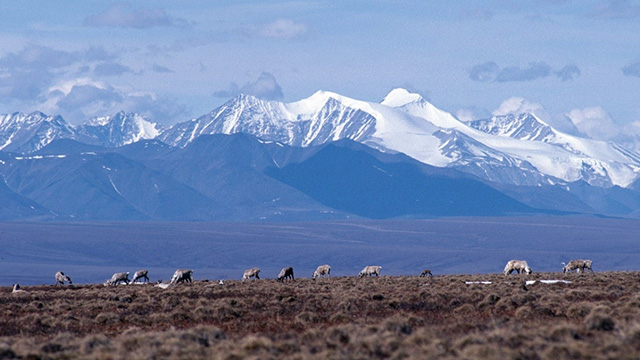This post first appeared at EcoWatch.
“Designating vast areas in the Arctic National Wildlife Refuge as Wilderness reflects the significance this landscape holds for America and its wildlife,” said Secretary of the Interior Sally Jewell. “Just like Yosemite or the Grand Canyon, the Arctic National Wildlife Refuge is one of our nation’s crown jewels and we have an obligation to preserve this spectacular place for generations to come.”
The US Fish and Wildlife Service, based on the best available science, recommends 12.28 million acres for designation as wilderness with four rivers — the Atigun, Hulahula, Kongakut and Marsh Fork Canning — for inclusion into the National Wild and Scenic Rivers System. This designation would protect and preserve the refuge, ensuring the land and water would remain unimpaired for use and enjoyment by future generations.
“The Coastal Plain is the wild heart of the Arctic National Wildlife Refuge, which is why Americans from all walks of life have advocated for its protection for more than half a century,” said Michael Brune, executive director of the Sierra Club. “This Wilderness recommendation at last recognizes the wonder and importance of the region for Native cultures, wildlife and anyone seeking to experience one of America’s last great wild places.”
The Arctic National Wildlife Refuge has the most diverse wildlife in the arctic. Caribou, polar bears, gray wolves and muskoxen, and more than 200 species of birds, 37 land mammal species, eight marine mammal species and 42 species of fish call the Refuge home.

Caribou graze on the coastal plain of the Arctic National Wildlife Refuge, with the Brooks Range as a backdrop. (Photo: US Fish and Wildlife Service Headquarters/flickr CC 2.0)
For thousands of years, the Gwich’in people have regarded the Coastal Plain of the Arctic Refuge as “The Sacred Place Where Life Begins.” The Coastal Plain is the most frequently used birthing and nursery grounds for the migratory porcupine caribou herd, which is the foundation for the social, economic and spiritual fabric of the lives of the Gwich’in people.
“This is great news for the Gwich’in people. The Fish and Wildlife report agrees with our Chiefs that the caribou birthplace on the Arctic Refuge Coastal Plain must be protected for future generations,” said Sarah James, chair of the Gwich’in steering committee. “This is a human rights issue. Oil development there would hurt the caribou and threaten the Gwich’in way of life. We ask the president to take the next step to permanent protection of this place we call ‘the Sacred Place Where Life Begins.’”
President Dwight Eisenhower first established the Arctic National Wildlife Refuge as the Arctic National Wildlife Range on Dec. 6, 1960 because of its “unique wildlife, wilderness and recreational values.” In 1980, Congress passed, and President Jimmy Carter signed the Alaska National Interest Lands Conservation Act, which protected more than 100 million acres, created 10 new national parks, renamed the area the Arctic National Wildlife Refuge, and specified additional purposes for the land, including conserving wildlife populations and habitats in their natural diversity, as well as protecting subsistence opportunities.
“President Obama has made a much needed step today in announcing protection for the Arctic National Wildlife Refuge in Alaska,” said Annie Leonard, executive director of Greenpeace USA. “By definition, this must mean that exploration for onshore oil is now off limits there. The people of Alaska are already suffering the effects of climate change. To prevent this situation from worsening, President Obama needs to heed the overwhelming scientific consensus that we must keep untapped fossil fuels in the ground and rule out all offshore arctic drilling for good, starting with canceling Shell’s lease in the Chukchi sea this spring.”


